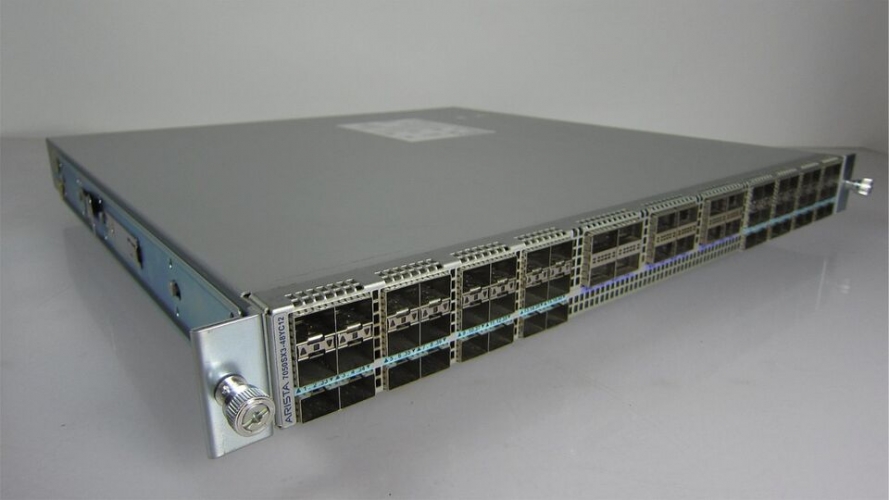Top 3 Arista Switches for High-Frequency Trading: Unmatched Low Latency and High Performance
In the world of High-Frequency Trading (HFT), milliseconds matter. Network engineers tasked with building HFT environments need to select switches that not only provide ultra-low latency but also support high-speed ports and critical Layer 3 features like QoS and VLAN tagging. This post will explore three of the best Arista switches tailored for HFT environments and discuss key IEEE protocols and RFCs essential for designing high-performance trading networks.
Key Requirements for HFT Switches:
1. Ultra-Low Latency: HFT environments demand nanosecond-level latency. Cut-through switching, precise buffer management, and advanced packet processing are crucial.
2. High-Speed Ports: 25/50/100GbE interfaces are the norm to ensure high-throughput data handling.
3. QoS and VLAN Tagging: Quality of Service (QoS) ensures the prioritization of critical trading data, while VLAN tagging helps in segregating traffic efficiently.
4. Compliance with Key Protocols: Features like IEEE 802.1Q (VLAN tagging), IEEE 802.1p (Priority tagging for QoS), and support for RFCs like RFC 3168 (Explicit Congestion Notification) are critical in managing network performance and reliability.
Let's dive into the top three Arista switches suited for HFT environments.
1. Arista DCS-7150S-24Q – The Low Latency Champion
The Arista 7150S series is widely regarded as one of the lowest latency switches available, making it ideal for HFT environments where nanoseconds can be the difference between a profitable and missed trade.
Key Features:
Latency: Sub-350 nanoseconds cut-through switching latency, setting the benchmark for ultra-low-latency performance.
Port Configuration: 24 x 40GbE QSFP+ ports, offering flexibility for various high-speed connectivity needs. Supports 10GbE connections using breakout cables, accommodating diverse trading applications.
Layer 3 Protocols: Full support for QoS, VLAN tagging (802.1Q), and IPv4/IPv6 routing, allowing seamless prioritization and traffic segmentation for trading operations.
Advanced Features: IEEE 1588 Precision Time Protocol (PTP) support for precise network synchronization, essential for time-stamped data in trading environments.
Why Choose It?
The DCS-7150S-24Q is perfect for environments that need the absolute lowest possible latency, especially in networks where 40GbE connectivity suffices. Its extensive Layer 3 feature set, along with advanced timestamping capabilities, ensures compliance with key protocols critical for HFT.
2. Arista DCS-7050SX3-48YC12 – High Port Density and Flexibility
The DCS-7050SX3-48YC12 offers a balance of low latency and high-speed ports, ideal for scaling high-performance networks without compromising speed.
Key Features:
Latency: 450-600 nanoseconds, providing low-latency packet forwarding suitable for HFT use cases.
Port Configuration: 48 x 25/50GbE ports and 12 x 100GbE ports, supporting the latest high-speed connectivity options crucial for today's trading environments.
Layer 3 Protocols: Full support for QoS, VLAN tagging (802.1Q), and other Layer 3 features such as BGP, OSPF, and ISIS. These features enable efficient traffic routing and management within trading networks.
Advanced Features: Supports IEEE 802.1p for traffic prioritization, ensuring latency-sensitive trading data is prioritized over less critical traffic. The switch also includes buffer management features, mitigating the risk of packet loss during congestion.
Why Choose It?
The DCS-7050SX3-48YC12 is ideal for HFT environments that require a mix of 25/50/100GbE interfaces. Its flexible port configuration makes it a versatile choice, supporting both small and large trading floors. The inclusion of advanced QoS and VLAN features ensures it can accommodate complex network segmentation and prioritization strategies.
3. Arista DCS-7280SR2A-48YC6 – Performance and Advanced Features
The DCS-7280SR2A-48YC6 is a powerhouse switch designed to provide both high throughput and advanced network services for the most demanding HFT environments.
Key Features:
Latency: Low-latency cut-through forwarding, with sub-microsecond performance, optimized for environments requiring rapid packet processing.
Port Configuration: 48 x 25GbE ports and 6 x 100GbE ports, providing flexible connectivity options for diverse HFT infrastructure.
Layer 3 Protocols: Extensive Layer 3 support, including MPLS, OSPF, BGP, and VRF, allowing robust routing and traffic management. The switch also fully supports QoS and VLAN tagging for traffic prioritization and network segmentation.
Advanced Features: IEEE 1588 PTP support for precise time synchronization, crucial for trading systems relying on accurate timestamps. Also includes support for RFC 8325, which ensures Wi-Fi QoS mappings align with wired network traffic prioritization.
Why Choose It?
The DCS-7280SR2A-48YC6 is a great option for large-scale HFT environments needing extensive routing capabilities and flexibility. Its combination of high-speed ports and advanced Layer 3 features enables it to handle complex, high-volume traffic patterns typical of trading networks.
Additional IEEE Protocols and RFCs to Consider:
IEEE 802.1Q: VLAN tagging is fundamental for separating trading networks, allowing secure and efficient traffic segmentation.
IEEE 802.1p: For setting priority levels within VLANs, ensuring that trading packets receive the highest priority.
IEEE 1588 (PTP): Essential for time synchronization across network devices, which is critical for timestamp accuracy in trading systems.
RFC 3168 (ECN): Explicit Congestion Notification is vital for managing congestion in IP networks, reducing latency without dropping packets.
RFC 8325: For aligning QoS between wired and wireless network segments, ensuring consistent prioritization for trading applications.
Selecting the right switch for HFT environments is crucial to ensure ultra-low latency, high-speed connectivity, and advanced traffic management. The Arista DCS-7150S-24Q offers unparalleled low latency for environments that need nanosecond-level performance. The DCS-7050SX3-48YC12 provides high port density and flexibility for a mix of 25/50/100GbE requirements. Lastly, the DCS-7280SR2A-48YC6 offers a comprehensive feature set for large-scale, complex trading networks.
When designing an HFT network, it's essential to ensure compliance with key IEEE protocols and RFCs to optimize performance, security, and time synchronization. The switches mentioned above not only meet these requirements but also offer the flexibility and scalability needed in high-frequency trading environments.
At Terabit Systems, we remain committed to providing cutting-edge networking solutions tailored to our customers' needs. Call us at +1 (415) 230-4353 or click here to connect for a quote or to learn more.
- Login to post comments

